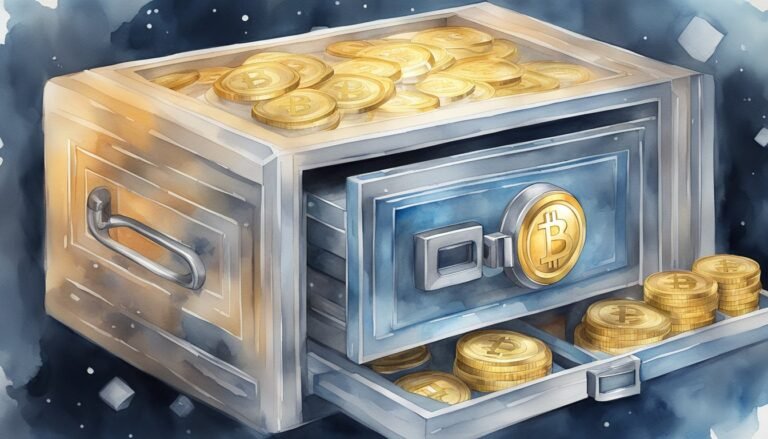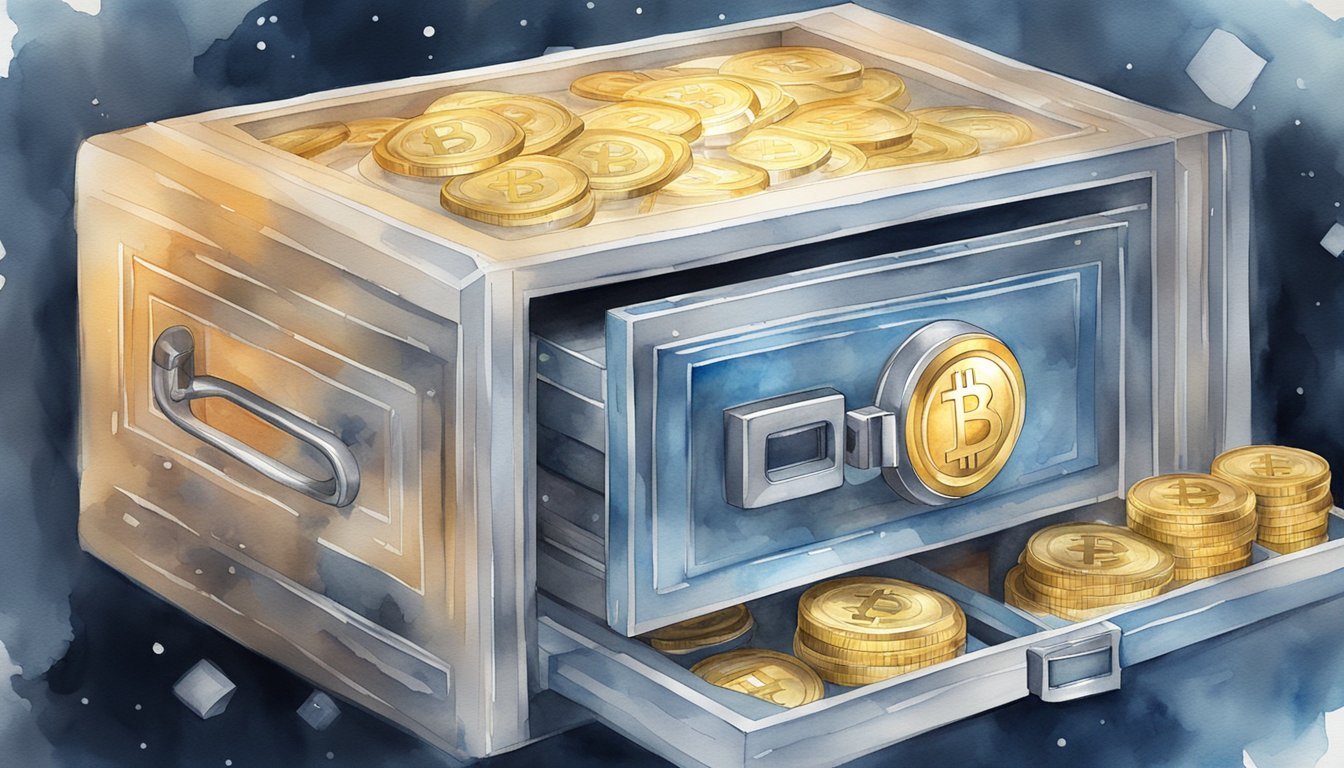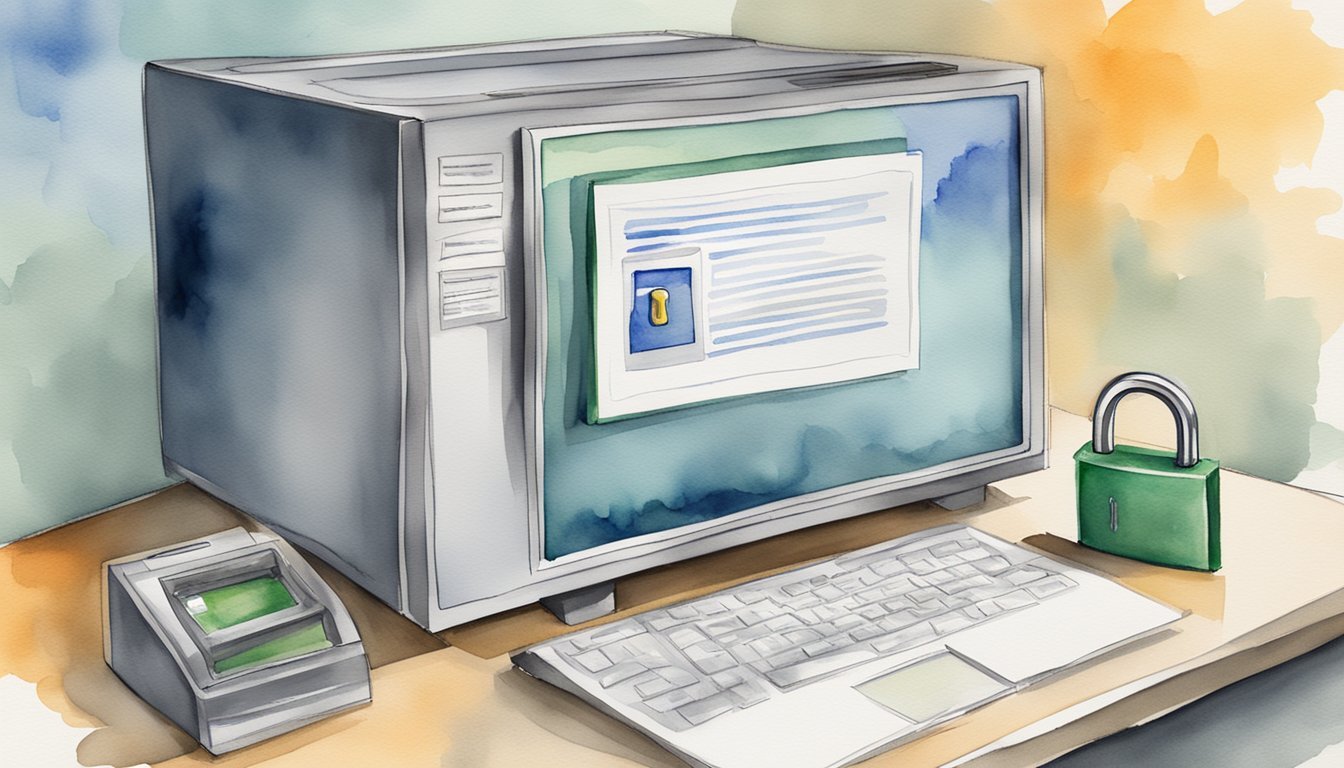7 Best Practices for Crypto Cold Storage: Securing Your Assets Safely

Storing your cryptocurrency securely is crucial to protect your digital assets from various threats.
Crypto cold storage involves keeping your private keys offline, away from potential online hacks.
This method is considered one of the safest ways to prevent unauthorized access and theft.

Understanding how to set up and maintain cold storage for your crypto can significantly enhance your digital security. By following best practices for crypto cold storage, you can ensure that your investments remain safe and secure.
1) Use Hardware Wallets
Hardware wallets are essential for securing your cryptocurrency.
They store your private keys offline, which makes them less vulnerable to hacking attempts.
Devices like the ELLIPAL Titan 2.0 and Ledger Stax are popular choices.
These wallets come with strong security features that protect your assets from online and offline threats.
Most hardware wallets support a wide range of cryptocurrencies.
They are easy to use and can connect to your computer or smartphone via USB or Bluetooth.
Another benefit is that hardware wallets often include recovery options.
If you lose your device, you can still access your funds using a recovery phrase.
Always purchase hardware wallets directly from the manufacturer or authorized resellers.
This ensures that the device hasn’t been tampered with before you receive it.
Keep the wallet’s firmware up to date.
Manufacturers regularly release updates to fix security vulnerabilities and improve performance.
Consider wallets like Trezor T and BITBOX02 for additional options.
Each has unique features that might suit your specific needs.
2) Enable Two-Factor Authentication
Two-factor authentication (2FA) adds an extra layer of security to your crypto storage.
With 2FA, you need more than just your password to access your crypto wallet.
Typically, you’ll use a secondary device or app to verify your identity.
Using 2FA can protect you from unauthorized access.
Even if someone knows your password, they won’t be able to access your account without the second verification step.
Software like Google Authenticator or Authy provides these secondary verification codes.
Enabling 2FA is fairly simple.
Go to your account settings on your crypto wallet or exchange and follow the steps to activate it.
For exchanges and online crypto services, enable two-factor authentication to enhance your security.
Always choose strong, unique passwords along with 2FA to maximize protection.
This combination makes it harder for anyone to breach your account.
Keep your 2FA backup codes in a safe place.
These codes help you recover access to your account if you lose your device.
Even with 2FA, stay alert for phishing attempts and other online threats.
Regularly updating your 2FA settings can ensure ongoing security.
Adding 2FA is a simple yet effective way to secure your crypto assets.
Take this step to better protect your digital wealth.
3) Backup Seed Phrases Securely
Your seed phrase is crucial for accessing and recovering your crypto wallet.
It consists of 12 or 24 random words generated when you create your wallet.
Losing it could mean losing access to your funds.
First, write down your seed phrase on paper.
Do not save it digitally, as hackers could easily access it.
Store the paper in a safe place, like a fireproof and waterproof safe.
Consider using metal backups for extra security.
These metal sheets can withstand fire, water, and physical damage, ensuring your seed phrase remains intact.
Avoid sharing your seed phrase with anyone.
If someone gets hold of it, they can access your wallet and steal your crypto.
Always keep it private.
Separate backups can add another layer of protection.
You could split your seed phrase into parts and store them in different locations.
This way, even if one part is compromised, the entire phrase remains secure.
Check your backups regularly.
Ensure they are still readable and intact.
Over time, paper can degrade, and other materials can suffer from wear.
You might also want to consider using multiple storage methods, like a combination of paper and metal storage.
This can provide redundancy and increase security.
For those who need more guidance, attending workshops or joining forums can be beneficial.
The crypto community often shares valuable tips and best practices.
4) Use Multi-Signature Wallets

Multi-signature wallets, often called multisig wallets, add an extra layer of security to your crypto holdings.
These wallets require multiple private keys to authorize a transaction, reducing the risk of unauthorized access.
For instance, a 2-of-3 multisig wallet would need at least two out of three keys to approve a transaction.
This makes it much harder for a single bad actor to steal your funds.
Some popular multisig wallets like Armory and Copay provide great security features.
Armory supports up to 7-of-7 authorizers for each transaction, while Copay allows up to 6-of-6.
Using multisig wallets can also help in a business environment.
You can set up the wallet so that multiple team members need to approve any transaction.
This adds an element of checks and balances to your crypto dealings.
Despite the extra steps involved, the added security makes multisig wallets a smart choice for cold storage.
They ensure that your assets are safer from hacks and accidental losses.
To implement a multisig wallet, you may need to spend some time getting familiar with how they work.
However, the time investment is worth it for the protection they offer.
By using a multi-signature wallet, you enhance the security of your crypto assets significantly.
5) Keep Software Updated

Keeping your software updated is essential for maintaining security in crypto cold storage.
Outdated software can have vulnerabilities that hackers can exploit.
Regular updates fix these security flaws, ensuring your assets stay safe.
Make it a habit to check for updates frequently.
Most cold storage devices have official software from the manufacturer.
Always get updates from these trusted sources.
Firmware updates for hardware wallets are just as important.
New firmware releases often include critical security enhancements.
Ignoring these updates can leave your wallet exposed to risks.
Different devices and platforms will have unique updating processes.
Follow the provided guidelines carefully.
This ensures you’re not only secure but also get the best performance from your storage device.
Neglecting updates can also lead to compatibility issues.
New cryptocurrencies or features might require the latest software.
Keeping your software updated ensures you can take advantage of these enhancements.
Be cautious of fake update prompts.
Only download updates from verified official websites.
Fake prompts can lead to malware, compromising your security.
Periodically, audit your devices to confirm they are up to date.
This practice can help avoid overlooking crucial updates.
Staying proactive about updates is a simple yet powerful way to protect your cryptocurrency.
Regularly updating your software and firmware reinforces your defense against potential threats.
For more insights, you can read about common mistakes to avoid in cold storage on CryptoGeek.
6) Store Seed Phrases Offline
Storing your seed phrases offline is crucial for protecting your cryptocurrency.
Keeping them offline ensures that they are not exposed to online threats like hacking or malware.
Write your seed phrase on a physical medium, such as paper or metal.
Using metal plates can offer added protection against fire and water damage.
Examples include products like Chaindeck, which physically encrypts your seed phrase for extra security.
Never store your seed phrase on a digital device or in the cloud.
Digital storage could be hacked, putting your assets at risk.
It’s safer to avoid electronic storage methods entirely.
Use a fireproof and waterproof safe to store the written seed phrase.
Your home safe can be a good place, as it protects against physical threats like fire and water.
Ensure the safe is in a secure location within your home.
Consider making multiple copies and storing them in different locations.
This way, if one copy is damaged or lost, you have backups.
Be cautious about where you store these copies to prevent unauthorized access.
Follow these steps to keep your cryptocurrency safe from potential risks.
By storing your seed phrases offline, you take an essential step to protect your investments.
7) Limit Exposure to Online Wallets

Keeping your cryptocurrency safe means reducing the time your assets spend in online wallets.
Online wallets, or hot wallets, are always connected to the internet, making them more susceptible to hacks.
By using a cold wallet, such as the ELLIPAL Titan Cold Wallet, you can store your crypto offline.
Cold wallets are not connected to the internet, providing a secure way to keep your assets away from potential online threats.
Minimize the amount of crypto you keep in hot wallets.
Only transfer what you need for daily transactions or trading.
Keeping large amounts in cold storage can greatly reduce your risk.
Cold wallets like the Ledger Nano X offer robust security features and support a wide range of cryptocurrencies.
This makes them a reliable choice for long-term storage.
Use multi-signature wallets when possible.
This setup requires multiple private keys to authorize a transaction, adding an extra layer of security when you do need to access your funds online.
Stay aware of the risks associated with hot wallets.
Always keep your private keys secure and avoid sharing them.
Enabling two-factor authentication (2FA) on your accounts can add an additional layer of protection.
By following these practices, you can significantly limit your exposure to online wallets, keeping your cryptocurrency assets more secure.
Understanding Crypto Cold Storage
Crypto cold storage is a method of keeping your private keys offline to protect your digital assets from hacks and unauthorized access.
This process is crucial for anyone who values security over convenience in their cryptocurrency management.
Definition and Importance
Cold storage refers to the practice of storing private keys offline.
These keys give you access to your crypto assets.
When kept offline, they are not vulnerable to cyber attacks.
Private keys stored online are at risk from malware and hackers.
With cold storage, even if your computer or network is compromised, your keys remain safe.
This high level of security is especially important if you hold large amounts of cryptocurrency.
Keeping your assets offline reduces the risk of losing them due to online threats.
How It Differs from Hot Storage
Hot storage, or hot wallets, keep private keys on devices connected to the internet.
This makes it quick and easy to access your crypto assets for trading or transactions.
Examples include mobile wallets and desktop wallets.
Cold storage, on the other hand, keeps private keys offline.
This involves using hardware wallets, paper wallets, or even air-gapped computers.
While accessing your assets takes more steps, the added security is worth it.
Hot storage is convenient but comes with higher risks.
For long-term storage and significant amounts of cryptocurrency, cold storage is the safer option.
Using both methods can balance security with accessibility.
Security Measures for Crypto Cold Storage
To keep your cryptocurrency safe, it’s important to understand the different types of cold storage options.
These include hardware wallets, paper wallets, and multi-signature wallets.
Each has unique features to consider.
Hardware Wallets
Hardware wallets are physical devices designed to store your cryptocurrency offline.
They are considered one of the most secure methods of cold storage because they keep your private keys away from the internet.
When using a hardware wallet, ensure it comes from a reputable manufacturer.
Popular brands include Ledger and Trezor.
Always verify that the device’s firmware is up to date.
This minimizes vulnerabilities that hackers could exploit.
Back up your recovery seed, the series of words used to recover your wallet, in a secure location.
If you lose this seed, you will permanently lose access to your assets.
Additionally, always create strong, unique passwords for the device and any related accounts.
Paper Wallets
Paper wallets involve printing out your private keys and public addresses on paper.
This method isolates your keys from the internet, reducing the risk of digital theft.
To create a paper wallet, use a trustworthy generator like BitAddress, and always work offline.
Print the keys using a secure, malware-free computer and printer.
Store the paper in a safe place, like a fire-resistant safe, and consider making multiple copies stored in different locations.
Be cautious of physical damages such as water, fire, or wear and tear.
Laminate the paper for added protection if necessary.
Never share your private keys with anyone, and be aware that if someone gains access to this paper, they can control your crypto assets.
Multi-Signature Wallets
Multi-signature (multi-sig) wallets require multiple private keys to authorize a transaction.
This adds an extra layer of security since no single person can move funds without the other key holders’ approval.
Set up a multi-sig wallet through services such as Electrum or BitGo.
Determine the number of keys required for a transaction, typically more than one.
For example, you might need 2 out of 3 keys to authorize transactions.
Distribute the keys to trusted parties or store them in different secure locations.
This prevents the risk of a single point of failure.
Remember, safeguarding the security of all keys is crucial; if keys are compromised or lost, accessing your funds could become difficult or impossible.
Maintaining Privacy with Cold Storage
Maintaining privacy when using cold storage for cryptocurrency involves important steps like choosing anonymous wallet addresses and regularly updating your wallet security features.
Doing these can help protect your digital assets and personal information from unauthorized access and cyber threats.
Choosing Anonymous Wallet Addresses
Using anonymous wallet addresses means that your identity isn’t directly linked to your cryptocurrency transactions.
To achieve this, avoid using addresses that have been publicly associated with your identity.
Generate new addresses for each transaction when possible.
Some wallets offer “stealth addresses” that make it even harder to connect transactions to a single user.
Opt for these if privacy is a top concern.
Think about using cold storage wallets that support multiple address generation.
Always monitor privacy settings and choose wallet options that offer advanced privacy features.
This ensures that your financial activities remain confidential.
It’s a balance between security and usability, but prioritizing these features can be crucial for maintaining anonymity.
Regularly Updating Wallet Security
Keeping your wallet’s security up to date is key to protecting your crypto assets.
Always use the latest version of your wallet software.
Wallet providers often release updates that fix security flaws and add new features to enhance protection.
Changing your PIN or passphrase regularly is another effective measure.
This makes it harder for anyone to gain unauthorized access.
Whenever possible, enable two-factor authentication (2FA) for an added layer of security.
Make sure your wallet firmware is also current.
Firmware updates can resolve issues that software updates might miss.
These steps ensure that your wallet remains secure against new types of threats, safeguarding your crypto holdings.






